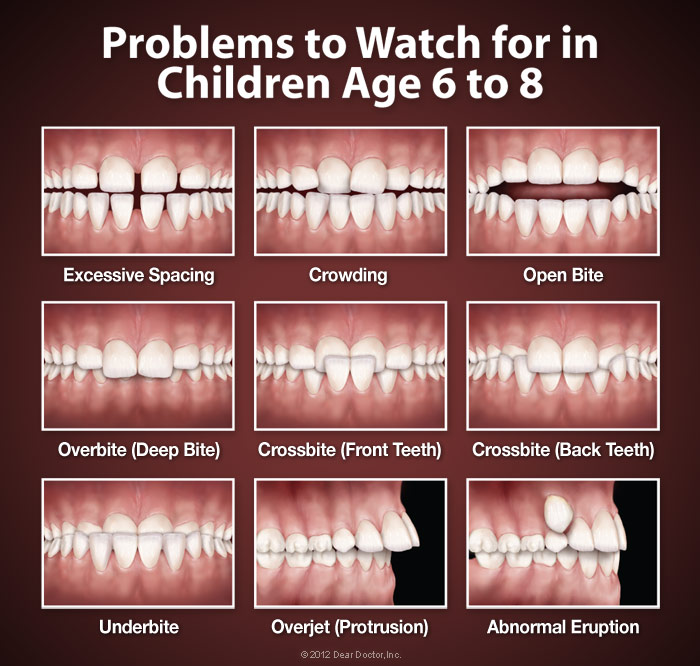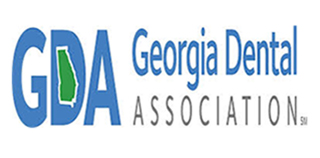Early Orthodontic Treatment
The goal of Early(Phase-One) treatment is to help the jaw develop into a proper shape, in a way that will accommodate all of the permanent teeth and improve the way the upper and lower jaws fit together. Children often exhibit early signs of jaw problems as they grow and develop. An upper jaw that is too narrow can be recognized at an early age. If children over the age of six are found to have this jaw discrepancy, they are candidates for early orthodontic treatment. Also, if children around the age of eight have crowded front teeth, early treatment can prevent the need to extract permanent teeth later.
Narrow vs Wide Arch Pics
Children should be evaluated as early as age 6 in order to guide the growth of the child and the eruption of the permanent teeth. Early treatment can regulate the width of the upper and lower arches (jaws), gain space for the permanent teeth, and avoid the need for permanent tooth extractions. Also, it reduces the likelihood of impacted permanent teeth ( the “fang look”), it corrects thumb-sucking, and eliminates abnormal swallowing and speech problems. In other words, early treatment can solve many problems and prevent more complicated and costly treatment later on.
5 Benefits of Early Treatment:
-
To Eliminate Crowding
Crowded teeth are caused by narrow arches. By developing dental arches at an early age we may prevent the crowding of the permanent teeth. Since 90% of the face is developed by age 12, treatment of the child’s bite problems should be corrected early to avoid more costly and lengthy treatment later on. One of the main advantages of early treatment is that it prevents the need to remove adult teeth later on. So it allows for NO EXTRACTION BRACES later on. -
Healthy Jaw Joints
Many children with narrow jaws, deep overbites or receding lower jaws have unhealthy jaw joints which can cause:
• Headaches
• Dizziness
• Fainting
• Difficulty opening jaw
• Neck Pain
• Ear aches and ringing in the ears
• Clicking or locking jaw
• Facial pain -
Help Your Child Breathe
Mouth-breathing can lead to orthodontic problems as well as other problems such as lack of oxygen and poor sleep habits. This leaves children prone to daytime fatigue, inability to concentrate in school and headaches. Some children stop breathing at night (sleep apnea) which research shows can be linked to a condition known as Attention Deficit Hyperactivity Disorder (ADHD). These children are often difficult to handle in school as they can become hyperactive and aggressive. These children are often prescribed strong medications. Literature has shown that the solution would be to expand the dental arches with functional appliances and to remove enlarged tonsils which are obstructing the airway. This results in increasing the level of oxygen in the blood which helps prevent ADHD and sleep apnea. -
End to Ear Pain, Ringing, and Stuffiness
Deep overbites and receding lower jaws may cause earaches, stuffiness or ringing in the ears. If infections have been ruled out, functional appliances can be utilized to correct the deep overbite or gently move the lower jaw forward, which can often eliminate ear pain or stuffiness in the ear. -
Facilitated Speech Development
Narrow jaws can confine the tongue and interfere with normal speech. Functional appliances can expand the size of the jaws which can make more room for the tongue and enhance a child’s ability to speak normally.
Early Interceptive Orthodontics
FUNCTIONAL APPLIANCES CAN HELP GUIDE THE GROWTH OF OUR CHILDREN AND CAN HELP CORRECT…..
- Bite problems
- Underdeveloped Jaws
- Deep overbites
- Airway problems
- Tongue thrusting habits
- Narrow arches
- Crowded teeth
- Jaw joint problems
- Thumb-sucking habits
FUNCTIONAL APPLIANCES CAN OFTEN PREVENT….
- Removal of adult teeth
- Fang like tooth appearance
- Lengthy use of braces
- Speech difficulties
- Crooked teeth
- Low Self-Esteem
Two Phase Treatment
PHASE ONE FUNCTIONAL APPLIANCES AGE 5-12
Early treatment should be initiated for:
- Habits such as tongue thrusting or thumb-sucking
- A constricted airway due to swollen tonsils or adenoids
- Mouth-breathing or snoring problems
- Bad bite
- Bone problems (narrow or underdeveloped jaw)
- Retruded upper jaw
- Retruded lower jaw
4 Reasons to do Phase1 Treatment:
- FACIAL DEVELOPMENT
75% of 12-year-olds need orthodontic treatment. By age 12, already 90% of the child’s face has developed. By guiding facial development earlier, by using functional appliances, 80% of the treatment can be corrected before the adult teeth are present. - COOPERATION
Younger children between ages 8-11 are often more cooperative than children 12-14. - SHORTEN TREATMENT TIME
Children that start with Phase One treatment with functional appliances will spend less time in fixed braces when the adult teeth come into the mouth. - TO CORRECT UNDERDEVELOPED JAWS Almost 50% of children who need orthodontic treatment due to a bad bite have underdeveloped lower jaws. Functional appliances can reposition the lower jaw forward, improve the child’s profile and correct the bite problems in 7-9 months.
Phase Two - Braces Ages 12 or Older (No Extraction)
Teeth are straightened with full upper and lower braces. Braces usually take 1 ½ – 2 years.
Conclusion, Advantages of Two Phase Treatment
- Can avoid more costly treatment later by eliminating the orthodontic and jaw problems early rather than delaying treatment when the problems are more serious
- Improve children’s self-esteem when crooked teeth and underdeveloped jaws are corrected early.
- Shortens the time in fixed braces. If treatment is initiated early, many times orthodontic treatment can be completed before the child goes to high school.
- Sometimes when the bad bite is solved in Phase I the patient does not need Phase II treatment. This results in a substantial cost saving to the patient.
YOUR CHILDREN DESERVE…
BEAUTIFUL BROAD SMILES
By using functional appliances while children are actively growing, we can help them achieve a beautiful broad smile. Mouth-breathing can cause narrow arches and unattractive smiles.
Planning now can save your smile later: Children benefit tremendously from early phase treatment. Receiving early treatment may prevent the removal of permanent teeth later in life, or the need for surgical procedures to realign the jaws.



